Thrift Armeria 'Joystick Red' (Joystick Series)

ABOUT
Armeria 'Joystick Red', which is part of the Joystick Series, is a striking perennial known for its vibrant flower clusters and tufted foliage. The plant displays dense, cushion-like clumps of grassy, evergreen leaves which are fine and needle-like in texture, providing an attractive, low-growing mound of greenery. Sitting atop long, sturdy stems, the signature feature of this Armeria cultivar is its round, pom-pom-like flower heads that emanate a rich, deep red hue. These vividly colored blooms are tightly packed, creating a striking contrast against the green foliage below. The flowers of the 'Joystick Red' emerge in the warmer months, offering a pop of color that is particularly eye-catching. When in full blossom, the plant becomes an excellent choice for adding bold red tones to rock gardens, borders, or as part of a coastal garden due to its tolerance for salty conditions. The blooms of Armeria 'Joystick Red' are not only visually appealing; they also attract pollinators such as butterflies and bees, adding dynamism and ecological benefits to the garden spaces they inhabit.
About this plant
 Names
NamesFamily
Plumbaginaceae
Synonyms
Joystick Red Sea Thrift, Joystick Red Sea Pink, Joystick Red Thrift
Common names
Armeria 'Joystick Red'
 Toxicity
ToxicityTo humans
Sea Thrift is not known to be toxic to humans. There are no commonly reported symptoms of poisoning from ingesting any part of this plant, as it is generally considered non-toxic.
To pets
Sea Thrift is not known to be toxic to pets. There are no commonly reported symptoms of poisoning from pets ingesting any part of this plant, as it is generally considered non-toxic to animals.
 Characteristics
CharacteristicsLife cycle
Perennials
Foliage type
Evergreen
Color of leaves
Green
Flower color
Red
Height
1 foot (30 centimeters)
Spread
1 foot (30 centimeters)
Plant type
Herb
Hardiness zones
5
Native area
Europe
Benefits
 General Benefits
General Benefits- Easy to grow: Thrives in a range of soil types and climate conditions, making it a versatile choice for gardeners.
- Drought resistant: Once established, it requires minimal watering, conserving water resources.
- Attracts pollinators: Blossoms can attract butterflies and bees, supporting local ecosystems.
- Low maintenance: Requires little care beyond the occasional deadheading and division of clumps to maintain vigor.
- Long blooming season: Provides color and visual interest from late spring to early fall.
- Compact growth habit: Ideal for rock gardens, borders, or small spaces where ground cover or low-growing plants are desired.
- Evergreen foliage: The foliage often stays green throughout the year, adding consistent beauty to the garden.
- Vibrant color: The 'Joystick Red' variety offers striking red blooms, adding a splash of color to any garden palette.
- Deer resistant: Less appealing to deer, which can help protect the garden from browsing.
- Suitable for container gardening: Can thrive in pots or containers, offering flexibility in garden design and space use.
 Medical Properties
Medical PropertiesThis plant is not used for medical purposes.
 Air-purifying Qualities
Air-purifying QualitiesThis plant is not specifically known for air purifying qualities.
 Other Uses
Other Uses- Rock gardens: Thrushflower can be planted amongst the rocks to create natural-looking drifts of color.
- Themed landscaping: Its bright red blooms can be used in a patriotic garden theme, combining plants with red, white, and blue flowers.
- Container gardening: Thrushflower is suitable for planting in containers, which can then be arranged on patios, balconies, or steps for ornamental purposes.
- Ground cover: When planted in masses, Thrushflower can serve as an attractive ground cover, reducing weed growth.
- Fairy gardens: The small size and appealing shape of Thrushflower make it a delightful addition to whimsical fairy garden designs.
- Seasonal wreaths: The flowers of Thrushflower can be dried and used in making decorative wreaths for doors or walls.
- Edging plants: Thrushflower can be used as a border along walkways or garden beds due to its compact growth habit.
- Seaside gardens: Being tolerant of salty winds and soils, Thrushflower is ideal for coastal garden settings.
- Photography: The vibrant red blooms provide a picturesque quality, making them an excellent subject for botanical photography.
- Crafting pressed flowers: The blooms of Thrushflower can be pressed and used in craft projects, like creating bookmarks or artwork.
Interesting Facts
 Feng Shui
Feng ShuiThe Sea Thrift is not used in Feng Shui practice.
 Zodiac Sign Compitability
Zodiac Sign CompitabilityThe Sea Thrift is not used in astrology practice.
 Plant Symbolism
Plant Symbolism- Resilience - Thrift, commonly known for its ability to grow in poor soils and withstand harsh conditions, symbolizes resilience and the ability to thrive in challenging environments.
- Persistence - The plant’s perennial nature and its tendency to form dense, cushion-like clumps can represent persistence and determination.
- Simplicity - With its straightforward form and modest flowers, thrift may also signify simplicity and an appreciation for the unassuming beauty of nature.
 Water
WaterThrift, also known as sea pink, including the Armeria 'Joystick Red', requires moderate watering, generally about 1 inch of water per week. Overwatering should be avoided to prevent root rot. During the growing season, check the soil moisture regularly and water whenever the top inch of soil feels dry. Reduce watering during the dormant season, and ensure proper drainage as stagnant water can harm the plant. Water the plant with approximately 1 to 1.5 gallons of water spread evenly around the plant base to avoid wetting the foliage, which could lead to fungal issues.
 Light
LightThrift thrives best in full sunlight, so place Armeria 'Joystick Red' in a spot where it can receive at least 6 to 8 hours of direct sunlight daily. While it can tolerate some light shade, too little light can lead to poor flowering and weak growth. Avoiding harsh midday sun in extremely hot climates can prevent scorching, but generally, it prefers bright conditions.
 Temperature
TemperatureThrift, including Armeria 'Joystick Red', prefers cooler temperatures and can survive in conditions as low as 20°F, making it suitable for many temperate climates. The ideal temperature range is between 60°F and 75°F, which encourages robust growth and flowering. However, it's quite hardy and can tolerate brief periods of extreme cold or heat as long as the fluctuation is not prolonged.
 Pruning
PruningThrift, such as Armeria 'Joystick Red', benefits from pruning to remove spent flower stems and encourage a tidy growth habit. Deadhead the faded flowers promptly to promote further blooming throughout the season. In late autumn or early spring, trim back any dead or damaged foliage to maintain plant health and appearance. Pruning is typically done annually or as needed when the plant appears untidy.
 Cleaning
CleaningAs needed
 Soil
SoilThrift 'Joystick Red' prefers well-draining soil with a mix of sand, loam, and compost to promote good drainage and aeration. The ideal soil pH for Thrift is slightly acidic to neutral, ranging from 5.5 to 7.0. A recipe for the best soil mix would be 2 parts potting soil, 1 part coarse sand, and 1 part compost.
 Repotting
RepottingThrift 'Joystick Red' typically requires repotting every 2 to 3 years to refresh the soil and provide space for root growth. It's best to repot in the spring before new growth begins.
 Humidity & Misting
Humidity & MistingThrift 'Joystick Red' tolerates a wide range of humidity levels but prefers average to low humidity similar to its native coastal and mountain habitats. No specific humidity adjustments are typically necessary.
 Suitable locations
Suitable locationsIndoor
Provide bright light, well-draining soil, and moderate water.
Outdoor
Plant in full sun, well-draining soil, and space 15cm apart.
Hardiness zone
4-8 USDA
 Life cycle
Life cycleThe Sea Thrift 'Joystick Red' begins its life cycle when the seeds are sown in well-draining soil, typically during the spring or fall. Upon germination, which takes a few weeks, the seedlings develop a rosette of grass-like leaves, entering the vegetative growth stage. As the plant matures, it progresses to the flowering stage usually in late spring to early summer, producing globular flower heads atop sturdy, upright stems. After pollination, typically by bees or other insects, the flowers develop into seed capsules, concluding the reproductive stage. These seeds then disperse, naturally through wind or animal activity, or are collected for propagation, to start a new life cycle. Once established, Sea Thrift 'Joystick Red' will go through periods of dormancy during colder seasons, resuming active growth as temperatures rise.
 Propogation
PropogationPropogation time
Spring-Early Summer
The most popular method of propagation for Armeria 'Joystick Red', commonly known as Sea Thrift or Sea Pink, is through division. This technique is typically performed in early spring or after the blooming period in late summer to early fall. To propagate Sea Thrift through division, one should carefully dig up an established clump and gently separate it into smaller segments, ensuring that each new section has a healthy portion of roots attached. These divisions can then be immediately replanted into well-draining soil, spaced about 6 to 12 inches (15 to 30 cm) apart to allow for adequate growth and air circulation. It's crucial to water the newly planted divisions thoroughly to help establish them in their new locations.
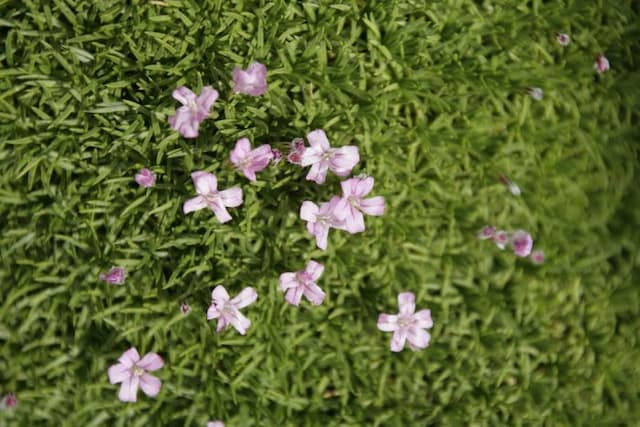
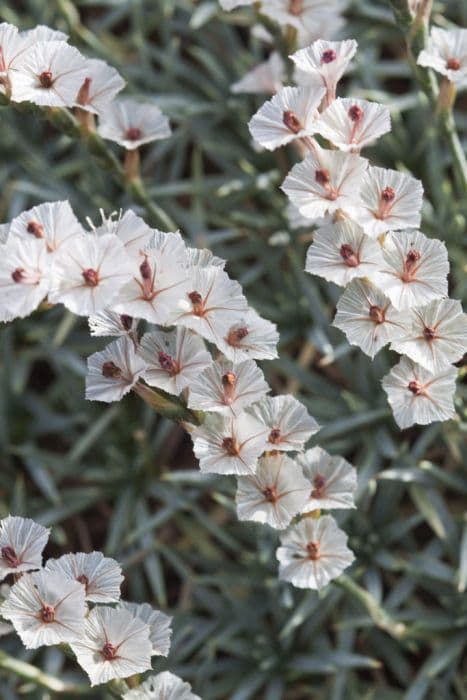
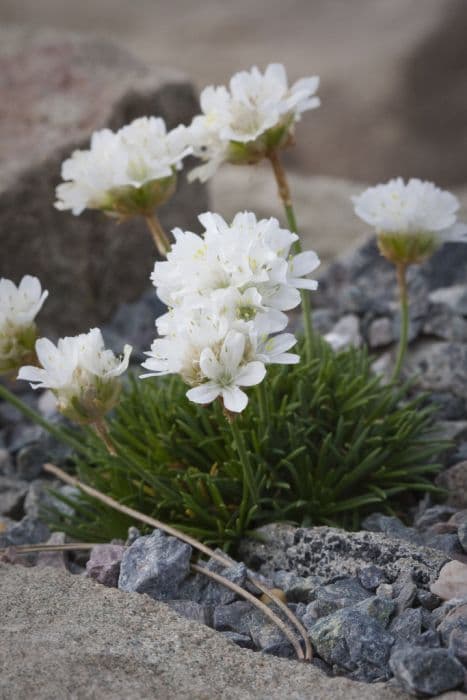
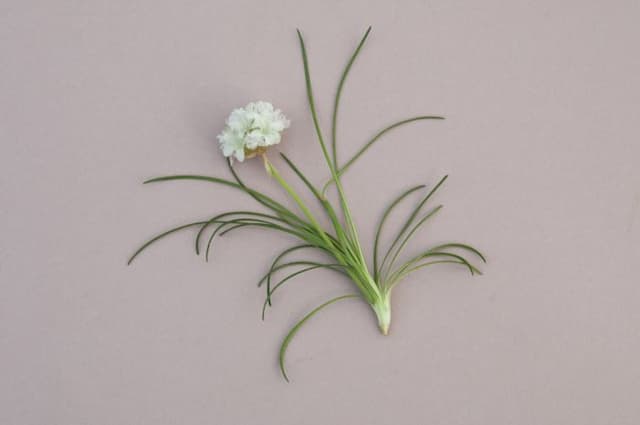
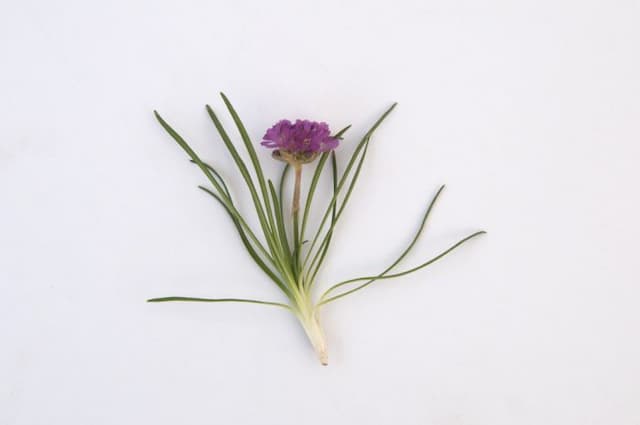




![Chinese plumbago [Forest Blue]](/_next/image?url=https%3A%2F%2Fplants-admin.emdemapps.com%2Fimages%2Fplants%2F%2Fimages%2F604b5c4db911f.png&w=640&q=75)